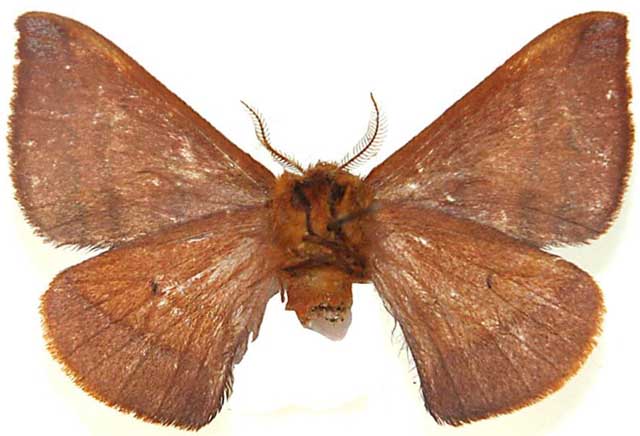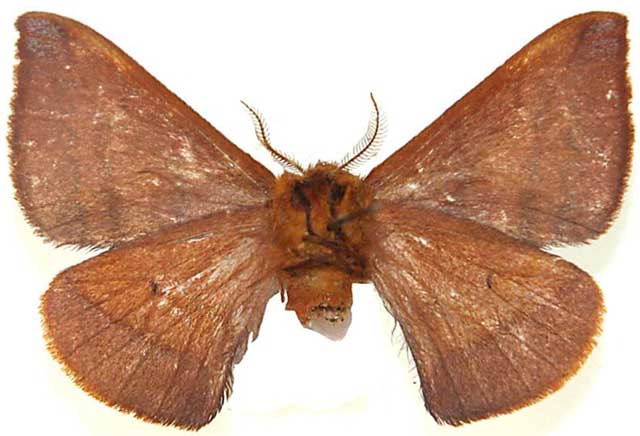Hirpsinjaevia viksinjaevi
Brechlin, 2019
Hirpsinjaevia viksinjaevi HT male, 38 mm, Calabaza Village, Junin, Peru,
January 29, 2011, 3035m, courtesy of Viktor Sinjaev
TAXONOMY:Superfamily: Bombycoidea, Latreille, 1802 |
|
|
Updated as per personal communication with Viktor Sinjaev, March 11, 2019 |

Hirpsinjaevia viksinjaevi HT male, 38 mm, Calabaza Village, Junin, Peru,
January 29, 2011, 3035m, courtesy of Viktor Sinjaev
TAXONOMY:Superfamily: Bombycoidea, Latreille, 1802 |
This moth is quite small and is very similar in appearance to several of the Hirpida species.
Larvae possibly feed on oak species.

Hirpsinjaevia viksinjaevi HT male (verso), 38 mm, Calabaza Village, Junin, Peru,
January 29, 2011, 3035m, courtesy of Viktor Sinjaev
Females are likely most active right after dusk. The male, above, was taken early in the evening.
Hirpsinjaevia viksinjaevi larvae are probably highly gregarious and have the urticating spines typical of larvae from the Subfamily Hemileucinae.
The species name, viksinjaevi, is honourific for collector Viktor Sinjaev. The genus name, Hirpsinjaevia, is also honourific for Viktor Sinjaev and recognizes a very close relationship to Hirpida species.
Quercus....... |
Oak |
Return to Hirpsinjaevia Index
Return to Main Saturniidae Index

